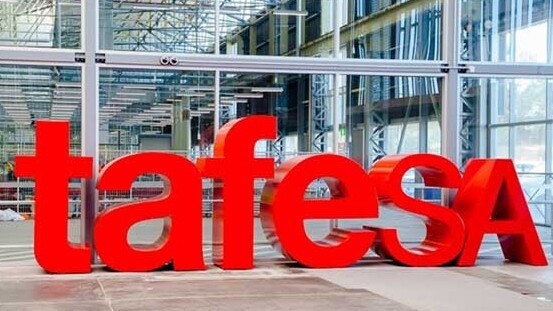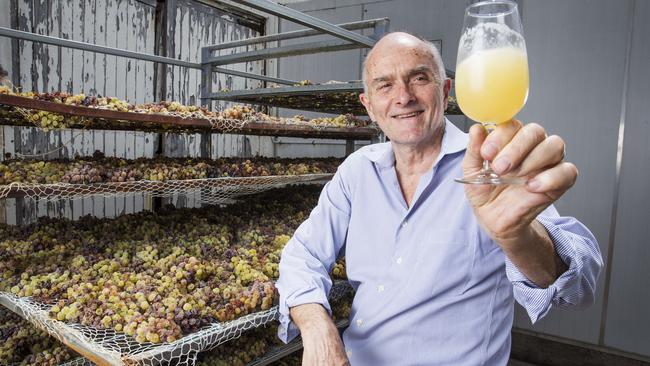Southern Adelaide Materials Recovery Facility to receive $5.4m in federal funding
A recycling facility run by three southern councils has been given a $5.4m funding boost from the Federal Government.
South
Don't miss out on the headlines from South . Followed categories will be added to My News.
A three-council recycling plant in Adelaide’s south will receive $5.4 million in funding from the Federal Government.
The Southern Materials Recovery Facility, a joint project between Marion, Onkaparinga and Holdfast Bay councils, will receive cash boost according to budget papers.
The government is investing to address “critical infrastructure gaps” in the country’s resource recovery system to ensure it “takes responsibility for its own waste”.
It will process at least 31,000 tonnes per annum of ‘yellow bin’ recyclables and is expected to be operational by the end of June.
Onkaparinga Mayor Erin Thompson said it was a “huge win” for the community and the environment.
“This state-of-the-art facility will not only deliver benefits for our ratepayers and local
economy, it will respond to the impacts of climate change,” Ms Thompson said.
Other major funding allocations for the south include:
• $2.6 billion for the North-South Corridor from Darlington to Anzac Highway.
• $5.1 million for renal services at the Southern Fleurieu Health Service.
Kingston MP Amanda Rishworth said she was disappointed not to see any funding for the duplications of Majors and Commercial roads.
“Traffic problems will only get worse,” Ms Rishworth said.
“The Morrison Government could not muster a single cent for new infrastructure in Kingston, despite our community desperately needing investment.
“There are a number of roads that sorely need upgrading that I have suggested to the government including the duplication and upgrade of Majors Road.
“It is incredibly disappointing that our community seems to be constantly neglected by this government.”
She also hoped Doctors Road was extended, which local fire brigades have been calling for.
BUDGET BREAKDOWN
HEALTH
The budget revealed the Australian Government will hand down $26.3 billion to support state health services, including $25.6 billion in National Health Reform funding.
When it comes to SA-specific funding, the budget greenlit $1.541 billion in health support, with the National Health Reform funding resulting in a massive $1.481 billion for hospital services, $31.8 million for public health and a further $28.7 million in the COVID-19 health response this financial year.

Treasury officials said the funding was “linked to growth in public hospital activity, the national efficient price and national efficient cost determined by the Independent Hospital Pricing Authority”.
Meanwhile, a further $8.1 million will go into community health, hospital and infrastructure projects to ensure patients “can access the care they need, where they need it”. while budget papers also revealed public dental services for adults would get a $9.4 million boost across the state this year.
End-of-life care in SA will also benefit from a further $800,000, while Specialist dementia care facilities will receive a further $300,000 in the 2021-2022 Federal Budget.
“The Australian Government is providing funding to improve access to palliative care for older Australians living in residential aged care facilities, supporting new approaches, such as ‘in reach’ services, that will improve palliative and end-of-life care,” Treasury officials said in the budget.
EDUCATION
A massive $24.848 billion in education funding, mostly made up by the $24.436 billion in “Quality Schools funding to government and non-government schools in all state”.
Public schools the state will divide up $3 billion in Federal Government funding, whereas non-government schools will benefit from $4.454 billion in federal support.
TAFE students are also set to benefit, with $2.5 million in statewide funding to “improve vocational education infrastructure, ensuring TAFEs are equipped to deliver training to the standards expected by students and industry”.

While $8.5 million in Skilling Australia’s funding will go to increase training in SA occupations in high demand, currently relying on skilled migrants, future growth industries, and rural and regional areas.
A Treasury spokesman said there was a “strong focus” on apprenticeships and traineeships.
The government will allocate more than $26 million for the next four years to help tertiary alternatives to university to attract more domestic students through 5000 additional short course places in 2021.
A $1.1 million boost to the end of 2021 will also create new employment pathways for university students and boost incentives for universities to enrol students in “industry PhDs”.
TRANSPORT
A further $8.4 million in black spot funding will be rolled out to “improve the safety of road sites that have been identified as high-risk areas for serious crashes”.
“Funding is aimed at improving sites that have a record of at least three accidents involving casualties over a five-year period and can demonstrate a benefit-to-cost ratio greater than two,” treasury officials said in budget papers.

SA motorists are set to benefit from a massive $488.3 million in roads investment funding, while commuters will be supported by an $51.1 million investment in Rail funding.
Budget papers also announced the allocation of $104.9 million in cash towards the Urban Congestion Fund, which aims to “remediate pinch points, improve traffic safety and flow and increase network efficiency for commuter and freight movements in major urban areas”.
RECREATION
Fishers and campers across South Australia will also benefit from $900,000 in funding for local councils to improve, maintain or build new boating, marine rescue, fishing and camping facilities.
TOURISM AND HOSPITALITY
The tourism and hospitality sectors will receive a welcome boost as the government temporarily allows student visa holders in those sectors to work more than 40 hours per fortnight.
This builds on previous measures in response to COVID-19 which allowed international students in critical sectors such as agriculture, health and aged care to also work more than 40 hours per week.

Craft beer brewers will join winemarked in receiving a $55m boost for the next three years and $60m the year after in tax refunds of any excise they pay up to $350,000.
The government plans to provide additional support to small distillers and brewers detrimentally affected by COVID-19 and boost Australia’s craft brewing industry.
DROUGHT
A $212.2 million package over the next four years will support farmers and communities to continue to manage drought.
The Future Drought Fund will receive $172.5 million over the next four years to continue programs and activities to support long-term drought resilience and help bolster primary producers, rural and regional communities, and their local governments.
Another $25 million over the next year will extend the On-Farm Emergency Water Infrastructure Rebate Scheme.
DISASTER RECOVERY
A new national agency will support local communities to respond to large-scale natural disasters and address the impact of future events and climate change.
A $1.2 billion package over the next five years will help improve Australia’s capability to prepare for, respond to and recover from natural disasters.
Emergency Management Australia in the Department of Home Affairs will co-ordinate Responses to national emergencies and a new National Recovery and Resilience Agency will focus on resilience to and recovery from hazards and disasters.
The Rural Financial Counselling Service will get an $8.5 million boost to improve service for primary producers experiencing financial hardship, as well as extended support for rural and regional small businesses affected by drought, COVID-19 and the 2020 bushfires.
LOCAL GOVERNMENT
Josh Frydenberg’s Federal Budget also revealed $85.7 million in financial assistance for SA local councils, including $22.4 million specifically committed to local roads.
“This cash injection will give councils immediate access to funds to help manage the cumulative impacts of drought, bushfires and the COVID-19 pandemic,” Treasury officials said.

“Funding under the Financial Assistance Grant program is paid through state governments to local governments.
“Both funding components are untied and can be spent according to each local government’s own priorities.”



